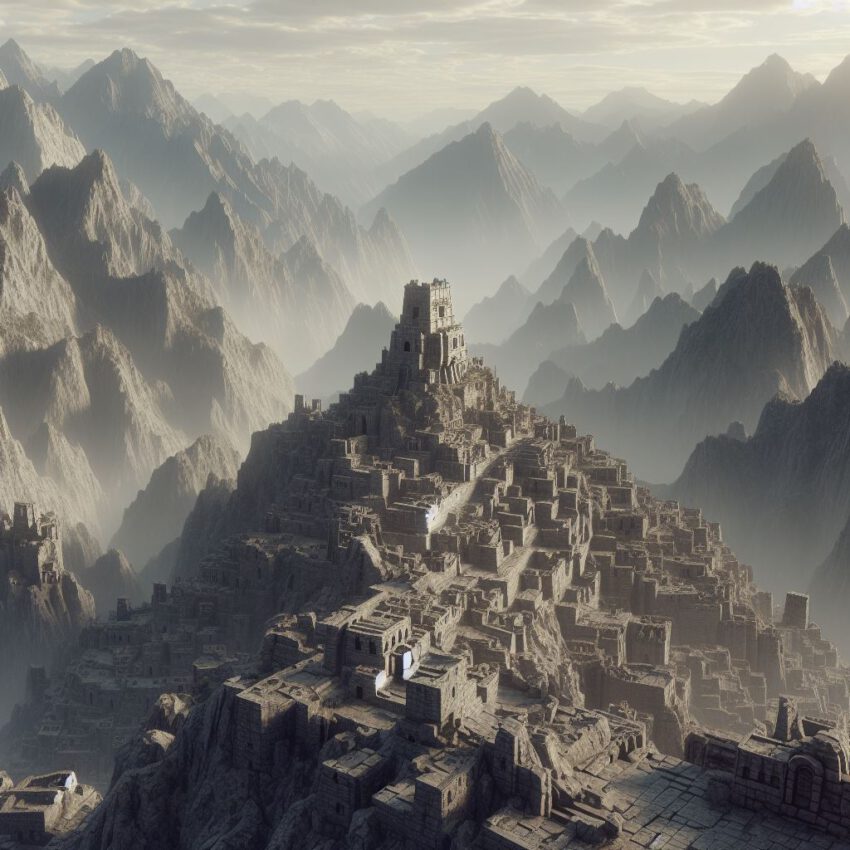(A trip from 1988)
I was backpacking through South America for a year, and I spent a significant part of this time (about two months) in Peru.
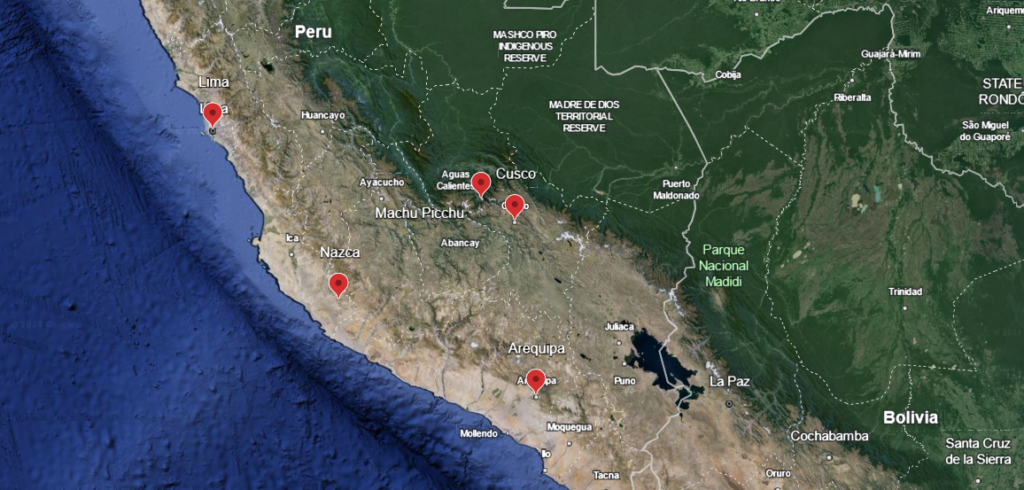
Peru is a fantastic destination for travellers, with mountains, deserts, jungles, beaches, ruins and whatever else you want to see. I went to see Machu Picchu, the famous, long-lost 15th-century Inca citadel in the mountains in south-eastern Peru, which was re-discovered by Hiram Bingham in 1911.
This is THE main tourist attraction in Peru these days, with entrance tickets booked out at least two months in advance, and hiking permits booked out half a year in advance. People typically travel there from the nearby city of Cusco by (luxury) train or bus, or they walk the famous Inca trail (about a three-day walk). Prices are staggering high meanwhile.
Things were luckily a bit easier when I was there in the 80ies. I had been travelling for a while with Cyrus, an American guy. We decided to walk the Inca trail, but start a bit earlier, thus extending the total walking trail by a few days. We started in Cusco, former Inca capital and a beautiful city.
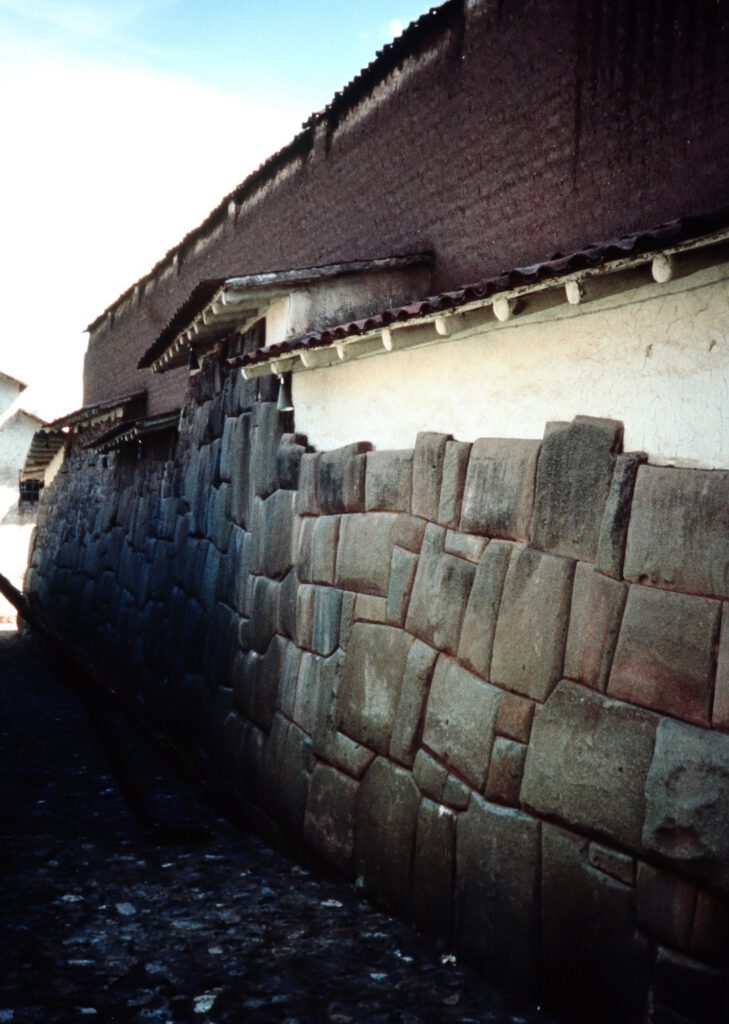
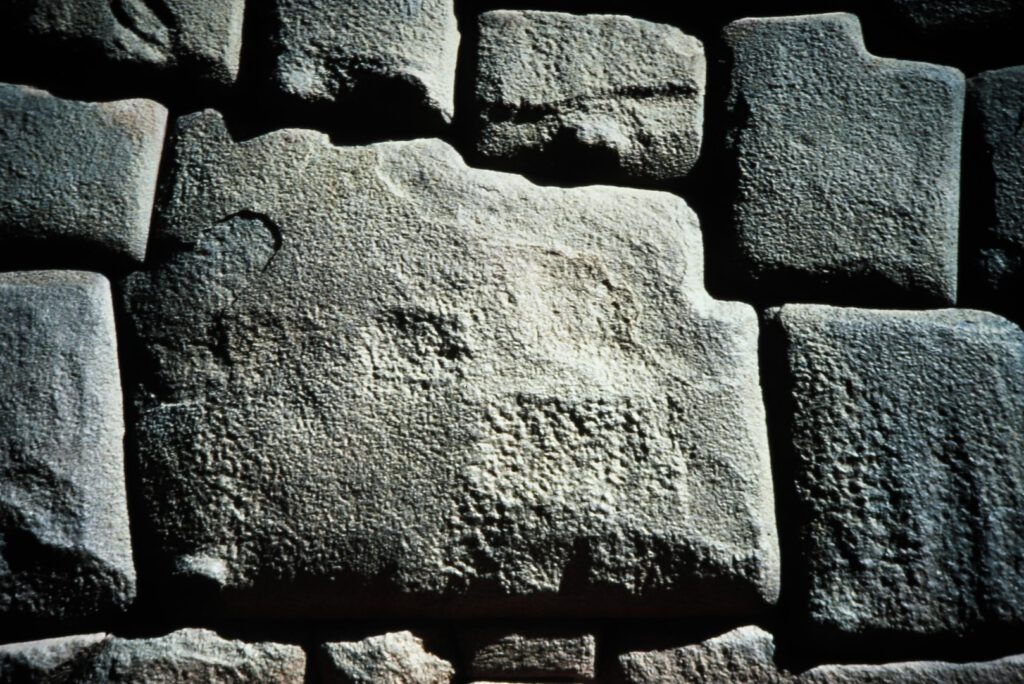
In the early morning, we took a bus from Cuzco to Markahuasi (mollepata anta Cusco) and started to climb the mountains, following a small foot path.
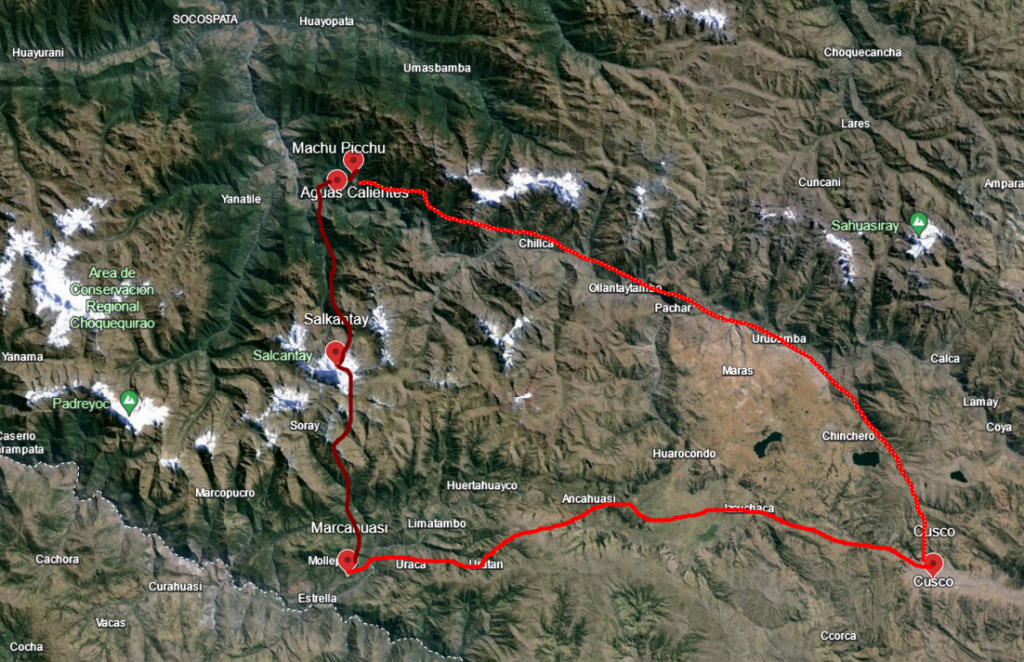
Having walked uphill already for a few hours (meanwhile it was around 3 pm), we were overtaken by a group of children, aged between 10 and 15 and wearing small backpacks and school uniforms. It turned out that they were living on a small farm much higher up, and came back from school. Each morning they would get up a 4 am, have some breakfast and then walk down some hours to Markahuasi in order to be at school in time. When school finished shortly after noon, they would walk back to their farm (uphill for a few hours), arrive there at about 4 pm, do their homework, help on the farm a bit, go to sleep and start over again on the next day!
We walked with them the remaining distance (they had to wait for us every ten minutes or so) and arrived at their parent’s little farm late in the afternoon. After meeting the parents, Cyrus and I decided to hire the father – Manuel – as a guide for the next couple of days. For him it was good money (about USD 50), probably more than he made in a month or two by selling whatever he planted and didn’t need for his family. So we camped next to his little shed and started off the next morning.
Here he was, just wearing sandals on his bare feet, a plastic tar to cover himself during the night, and a plastic bag for some basic food. Manuel brought a horse for our backpacks, and Cyrus and I just had our daypacks, hiking boots, flashlights etc, and we felt a bit overdressed next to him. This guy was flying! He ran up the mountain in a speed which was impossible for us to keep up with (although we considered ourselves to be in good shape). After we lost him the tenth time and were wondering where we had to go, we explained the principle of “being a guide means guiding!” to him, and from then on he stayed with us.
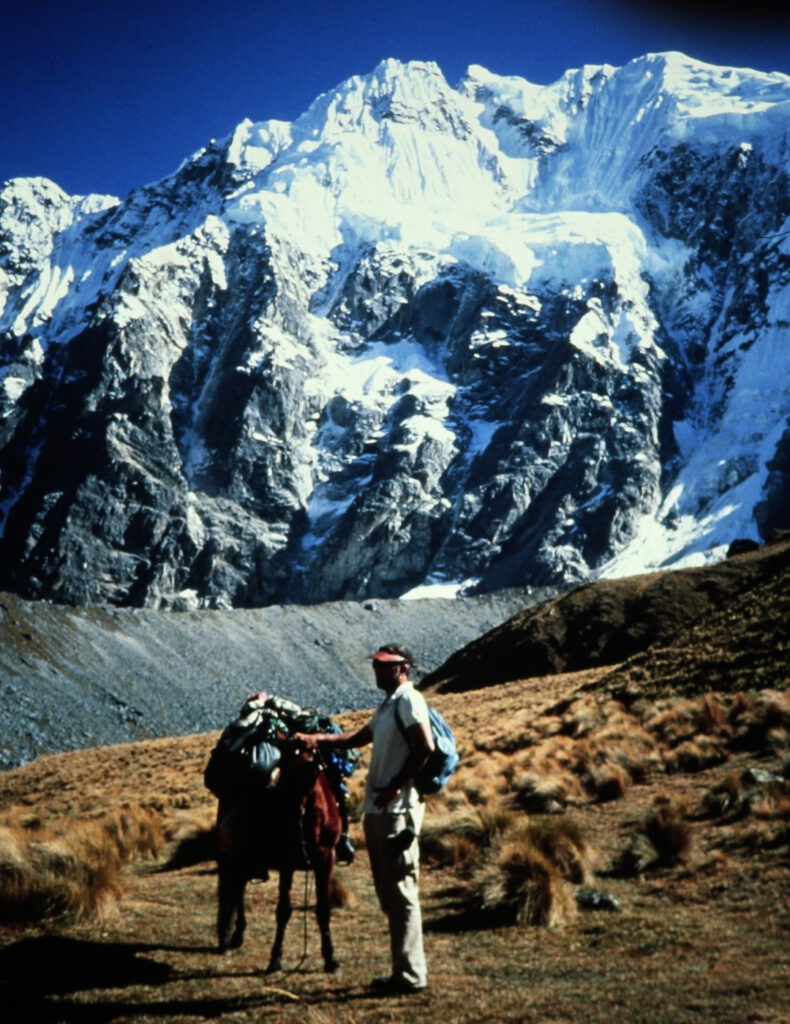
At night we camped (I had brought a small two-person tent), and our guide slept on the bare floor with his plastic carpet. We passed the Salkantay pass (with 4600 metres altitude), and in general spent quite some time in altitudes above 4000 metres. Eventually we reached the Inca trail and sent him home (with the money), as from there on the path was clearly marked (with stones set by the Inca!).
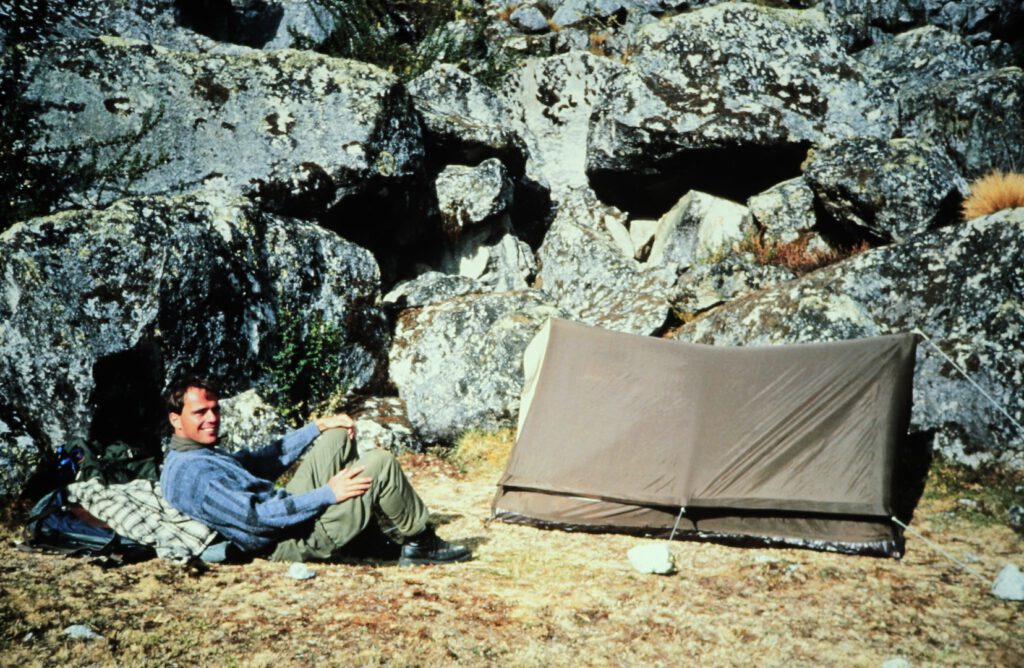
The Inca trail (‘Camino Inca’) is a fascinating walk, crossing mountain passes as high as 4200 metres with dramatic viewpoints as well as cloud forest, and of course passing lots of ancient Inca ruins. It is roughly 80 km long (depending on where you start) and normally takes three or four days to hike – so with our “pre-hike” we had a total hiking duration of eight days. The Inca trail links some major Inca sites (it was used as a communication line between these sites) and was built hundreds of years ago.
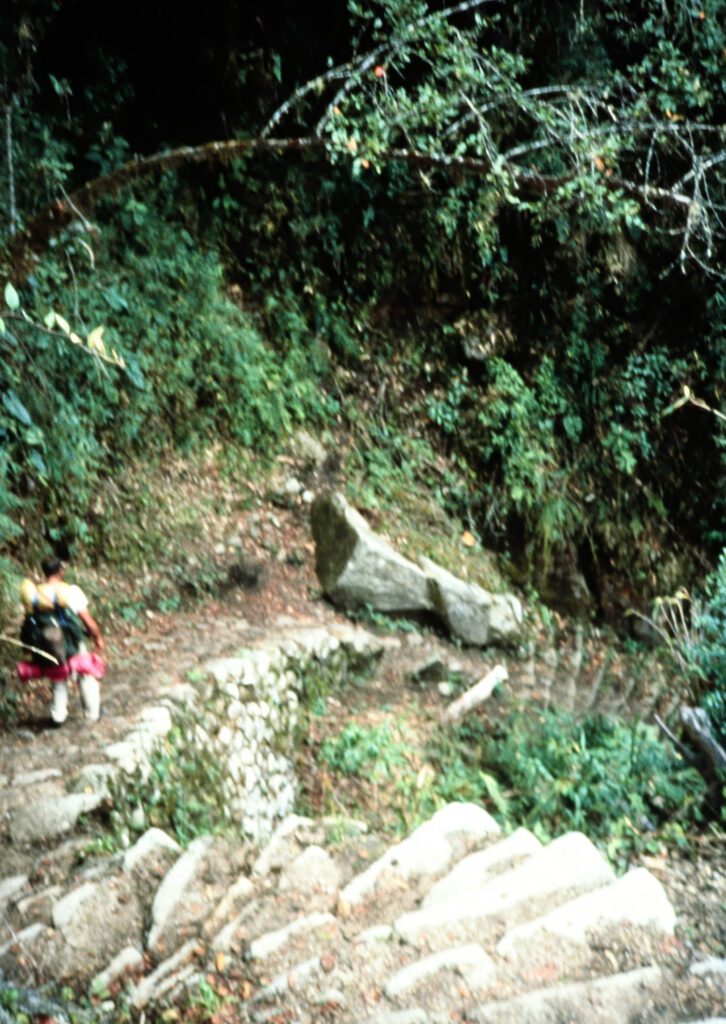
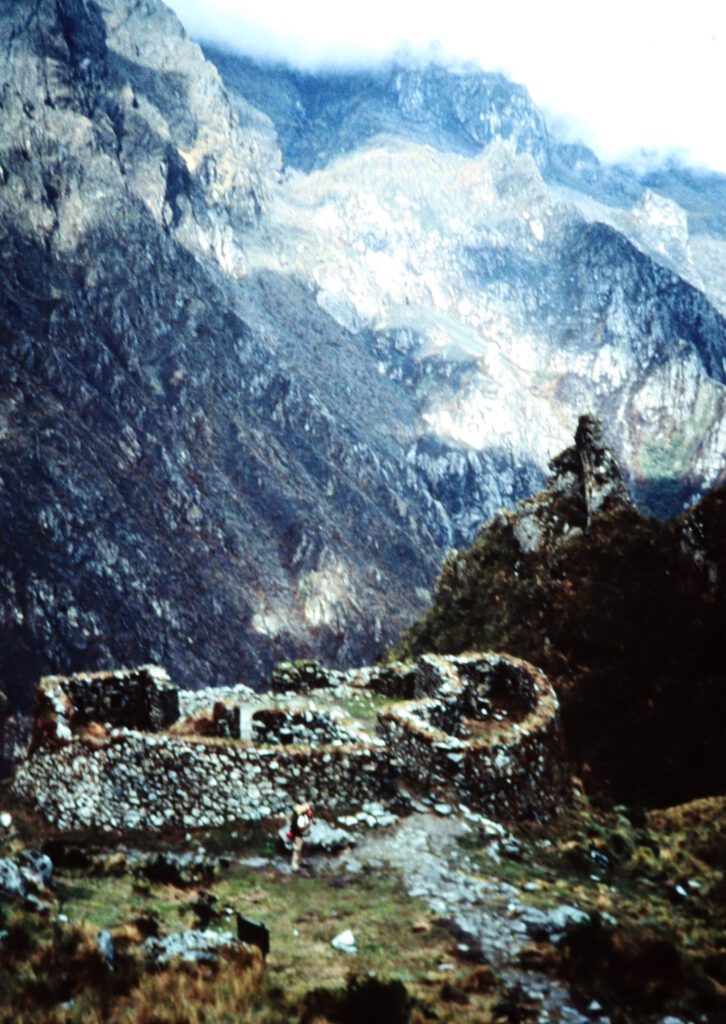
The final highlight are the last couple of kilometres, where steps lead up to the sun gate (‘Inti Punku’), from where you see Machu Picchu below. This is the place where all the famous pictures of Machu Picchu are taken…
Gary and I reached Machu Picchu in the late afternoon and didn’t have too much time anymore to explore the ruins, which was a shame. Anyhow, standing between those giant boulders and wondering how men could actually achieve something like this was overwhelming!
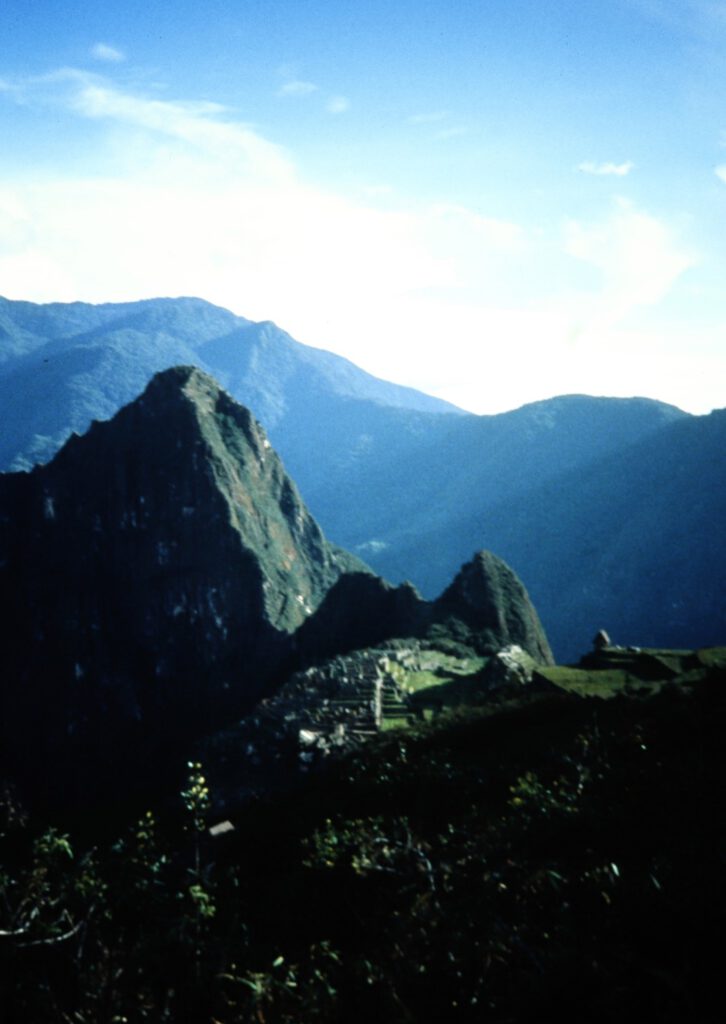
Late that evening we made our way back to Aguas Calientes in the dark (including through some railway tunnels), went into some thermal springs and just set there for a long while. My feet were bleeding (because cleverly I had bought new shoes just before that hike…), my back was aching from the backpack, my entire body was hurting. But a thermal spring and a bottle of beer can help a lot…
The next day we caught the train back to Cusco. Unfortunately that train was packed with tons of people going back from Machu Picchu. So packed that we didn’t get inside the train at all, instead we had to stand on the coupling between two railway carriages, hanging on for our dear lives. The trip lasted more than two hours, and some Peruvian thieves even tried to steal stuff from our backpacks at that time; luckily they didn’t succeed.
We spent a few more days resting in Cusco, but then moved on to the jungle: we went to Shintuya, a small missionary station in the Manu Nacional Park – but that’s another story for another day…
Back in Lima I visited the South American Explorers Club, formerly an institution for independent travellers in the region. Young backpackers would sit in a rather run-down office, drink a beer and read through hand-written “trip reports” of other travellers, trying to learn something about future destinations. At that time, before message boards and forums on the Internet, we relied on information passed on by other travellers we met in bars, hostels etc – and in South America specifically we relied on the South American Handbook, a travel guide book printed on the thinnest possible paper and still the size of a brick, with meanwhile 1800 pages covering about everything in South America and apparently “the longest-running travel guide in the English language” since 1921.
Lima at that time (1988) had it’s own problems – as had the entire country. The Shining Path (‘Sendero Luminoso’) terrorist group was active, trying to enforce a Communist government. Their warfare was directed against everyone, including local peasants, officials, general public and not at last foreigners. Meanwhile (since the early 2000s) their activity has quietened down a lot, but in the 1980ies they controlled entire areas of Peru. They also blew up whatever they could, e.g. power stations, which led to a strange situation where there was not enough electricity available to supply the entire city of Lima. This was solved by providing electricity block-wise, meaning that alternating blocks in the city did have light. To get something to eat, I just had to walk to the next block where there was electricity and thus people could cook…
In the South American Explorers Club I met Mike, an older American guy who had been in and out of the area for years. He told me a story which intrigued me right away: Four years ago, he was hiking with a friend in the area of San Pedro de Casta, about 100 km north-east of Lima. They stumbled into a small village nearby. The people from that village asked Mike if he wanted to see their “Inca ruins”. Not expecting anything, Mike and his friend agreed.
The next day they hiked to those ruins with a local guide and wouldn’t believe their eyes. They saw ruins from a pre-Inca civilization, as it looked like. Asking the villages if “any white men” had seen those ruins before them, the answer was “no”. So Mike and his friend apparently were the first Westeners to lay eyes on this.
They went back to Lima and talked to people from the IGN (Instituto Geographico Nacional), the local regulatory body in charge of old ruins. The IGN sent an archaeologist (paid by Mike), who estimated the ruins to be about 1500 years old, with about 4000 inhabitants of that city at that time. And that was how far the IGN showed interest – there are thousands of undiscovered Inca ruins in Peru, and they just have no money to explore these places seriously.
Mike took matters in his own hands. With the idea of turning this site into a tourist attraction, he convinced the local village people that they should clean up a path to the ruins. They were enthusiastic, imagining they money they would earn – after all, they had heard of Machu Picchu and the tourist Dollars that were spent there.
Mike had been at the ruins a few times in the past years, and he was just about to go there again. And I would join him; that was clear to me from the moment he told this story. I would be the discoverer of a major pre-Inca ruin! Indiana Jones, step aside! Of course Mike was four years ahead, but whatever…
The next Saturday we started off from Lima very early in the morning. Two more people were with us (a journalist from the Lima Times and another guy). Almost two hours with a bus to Chosica, and then seven back-breaking hours on the back of a truck. Switching to another truck, one more hour of pain, and we reached the village. By this time it was evening, and the village people provided us with a shelter for the night.
Mike introduced us as journalists, and I could prove it with my camera. In fact the people were impressed that someone had come all the way from Germany to see their ruins!
The next morning at 5 am we started the hike to the ruins. And then we reached them, at 4500 metres altitude, hidden in a mountain valley.
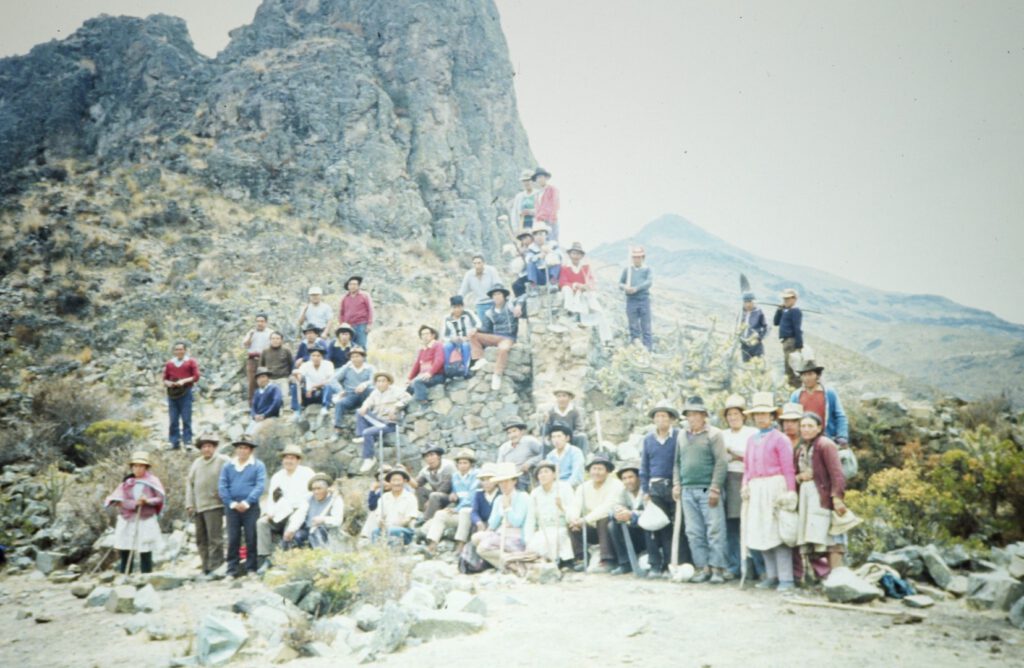
I had expected more, but then I realized that these ruins had not been excavated yet! Unlike the Mayan sites in Mexico and Guatemala, or also Machu Picchu and other ruins, these ruins were not yet restored, improved or repaired. This was exactly as it had been 1500 years ago. I had a similar experience, by the way, with Maya ruins in Guatemala; read more about it here.
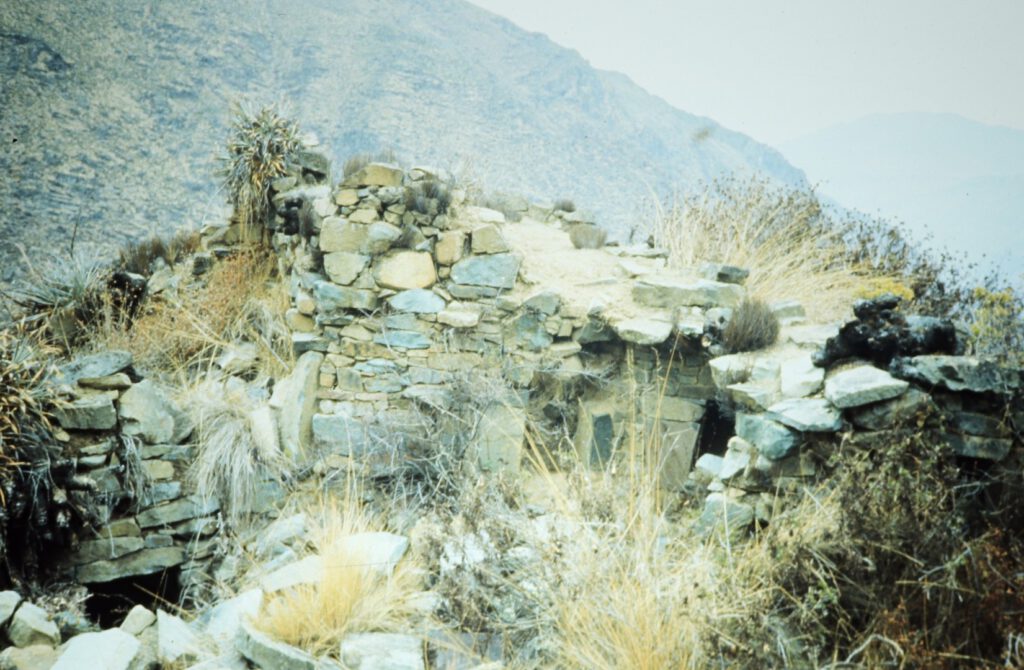
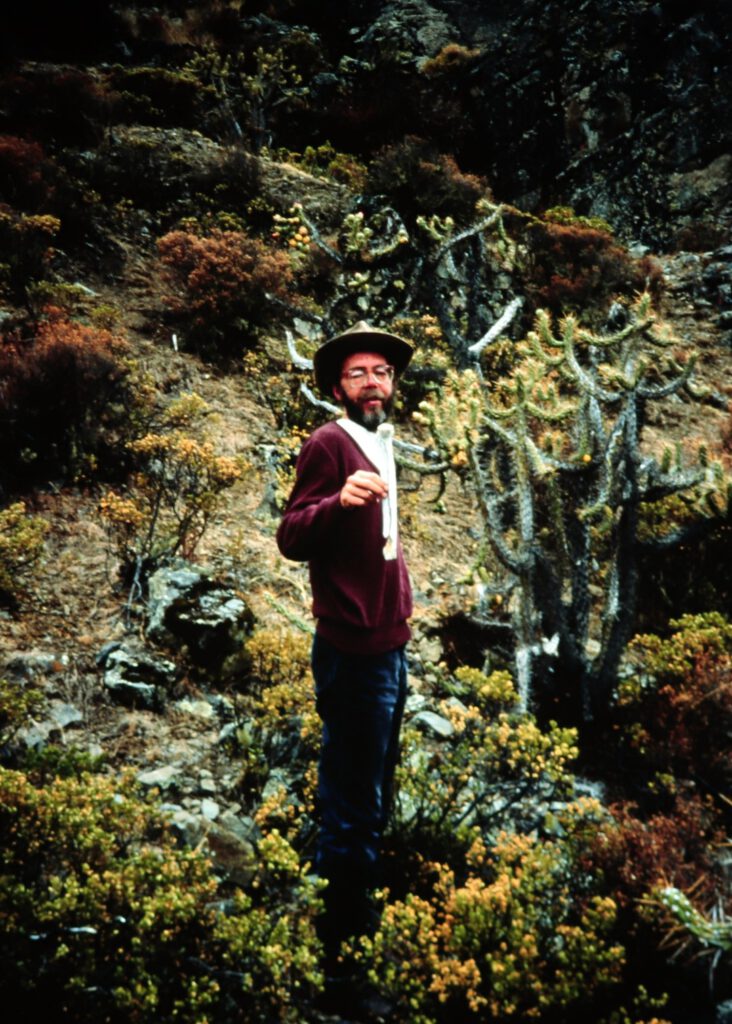
I walked around on my own, taking care that I wouldn’t fall into a crevice or break my leg on one of those boulders. Getting out from there with a broken leg would be a major challenge.
Then I saw it! After an exhausting and somewhat dangerous climb I saw a couple of mummies located inside a granite wall, out of reach of animals or other predators. They must have been sitting there for centuries!
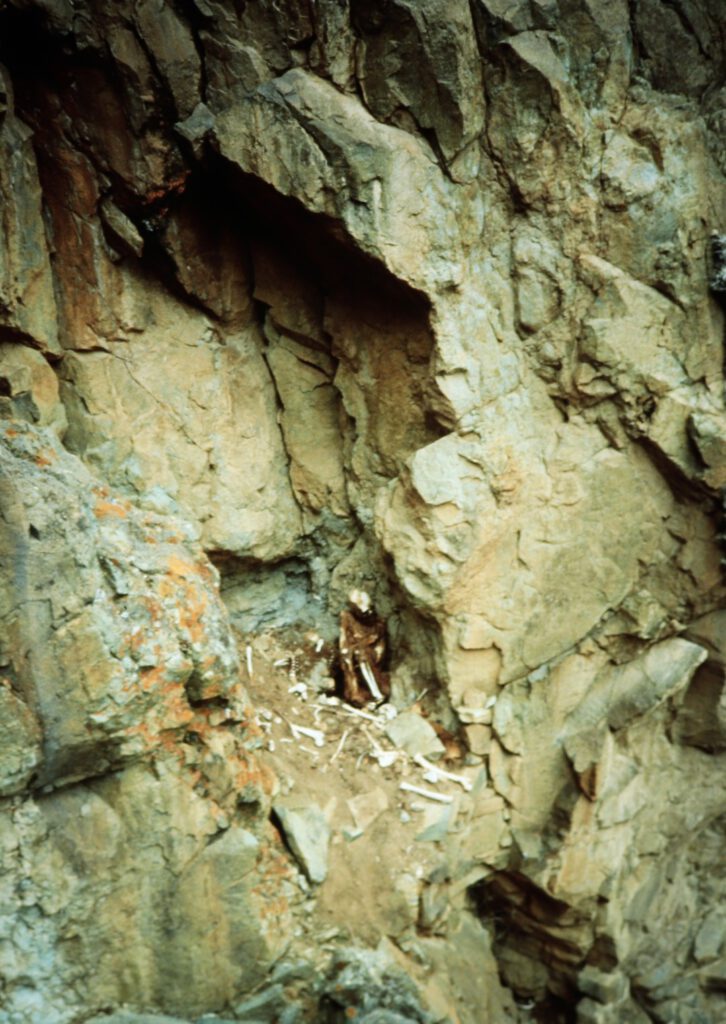
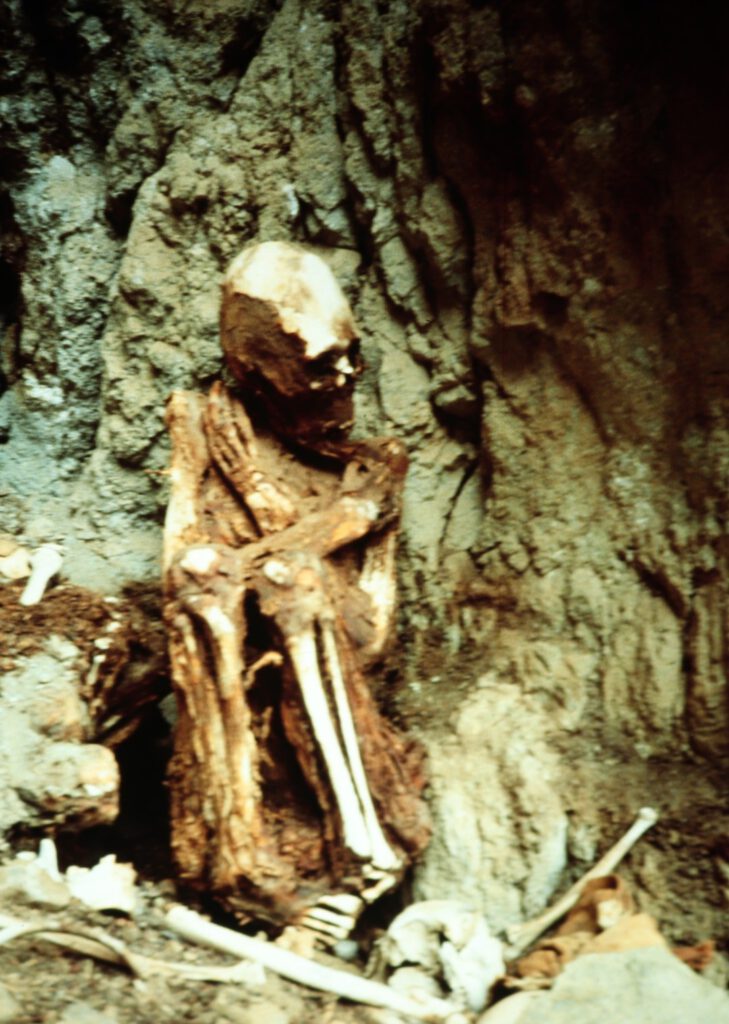
I climbed the wall and took some photos. Fascinating!
In the afternoon we walked back to the village, where the people cooked a feast for us, to honor the visitors “from all over the world”. It was guinea pig, the specialty in this area. I managed to eat it, although a roasted guinea pig looks somewhat strange, and there was not much meat on them anyway. However, we would have insulted our hosts if we had declined that.
After two more days, lots of speeches both from the village mayor, other dignitaries and ourselves, we made our way back to Lima, in the same arduous journey as when getting there.
So where was this? Still today (in the year 2006) I have not heard anything of these ruins in the news, so maybe Mike’s plan failed. I lost contact with Mike unfortunately. However, I am waiting, and for now I will not disclose its location.

